Chosen theme: Introduction to Hiking in National Parks. Step onto iconic trails with confidence as we demystify permits, gear, safety, and respectful travel. Subscribe for simple checklists, ask questions anytime, and share your first park pick to get personalized encouragement.
Choose Your First Park and Trail
Pick trails that reflect what excites you most: coastal vistas, alpine meadows, waterfalls, or quiet forests. Short loops with clear signage help first-timers enjoy views without pressure, turning curiosity into confidence from the very first steps.
Choose Your First Park and Trail
Look beyond mileage. Elevation gain, rocky footing, roots, and exposure can dramatically change a trail’s feel. Start with modest climbs, stable surfaces, and shaded corridors, then scale difficulty gradually as your legs and lungs adapt to new terrain.
Choose Your First Park and Trail
Many parks use timed entry or trail permits to protect fragile places. Check official websites early, set reminders, and print confirmations. If slots fill, ask rangers about alternatives. Flexibility often reveals quieter, equally beautiful routes nearby.
Bring navigation tools, headlamp, sun protection, insulation, first aid, fire starter, repair kit, food, water, and emergency shelter. Tailor items to your park’s conditions, including extra layers, blister care, and a small trash bag for stewardship.
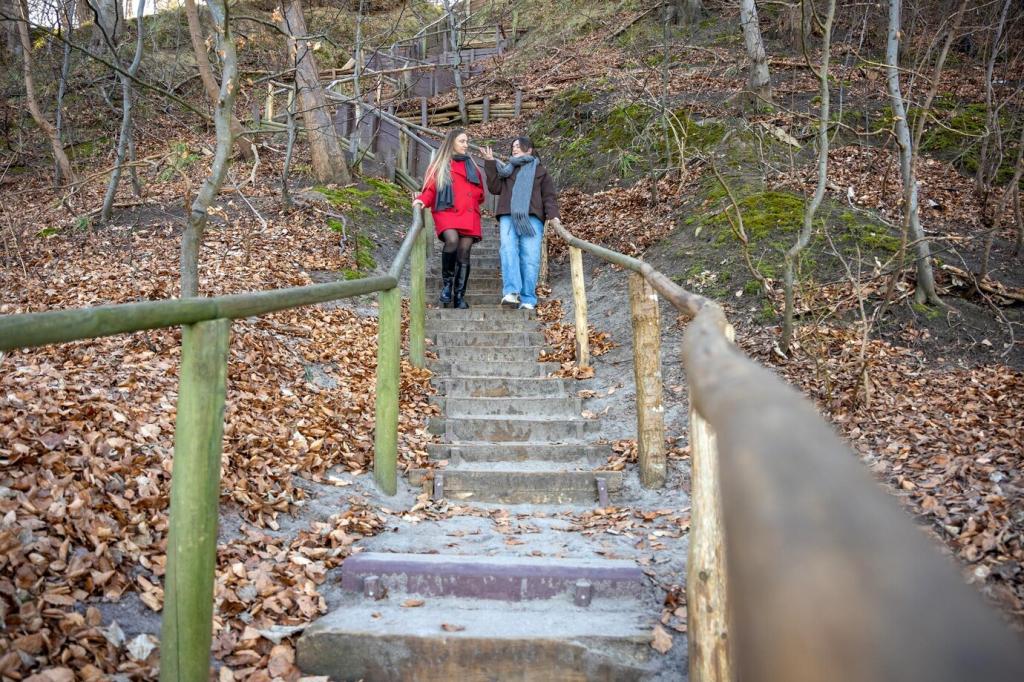
Respect the Land: Leave No Trace in National Parks
Trail edges and cryptobiotic soils are fragile. Walk single-file through puddles and mud rather than widening paths. Durable surfaces like rock and packed soil keep ecosystems intact, helping plants, insects, and waterways recover from heavy visitation.
Respect the Land: Leave No Trace in National Parks
Give animals generous space, store food securely, and never feed. Binoculars make safe encounters magical. Your restraint prevents habituation, protects migratory rhythms, and ensures that future hikers experience authentic wildlife behavior, not stressed animals seeking human snacks.
Respect the Land: Leave No Trace in National Parks
National parks protect living histories. Do not touch petroglyphs, cairns, or artifacts. Photograph without disturbing, read interpretive signs, and listen. Respect transforms your visit from quick sightseeing into a meaningful connection with stories that continue shaping these landscapes.
Footwear and socks are your foundation
Comfortable, well-fitting shoes paired with moisture-wicking socks prevent blisters and slips. Try footwear at day’s end when feet are slightly swollen. Prioritize grip, toe protection, and ankle confidence over brand hype for happy miles on national park trails.
Layers, sun protection, and comfort
A breathable base layer, insulating mid-layer, and windproof shell adapt to shifting weather. Add a brimmed hat, sunglasses, and mineral sunscreen. Small comforts like a neck gaiter and lightweight gloves amplify enjoyment on breezy overlooks and exposed ridgelines.
Smart daypack packing
Pack heavy items close to your spine, snacks accessible, and a trash bag for micro-litter. Use a hydration reservoir or bottles you actually like. A small sit pad transforms rest breaks into scenic, restorative mini-moments along the trail.
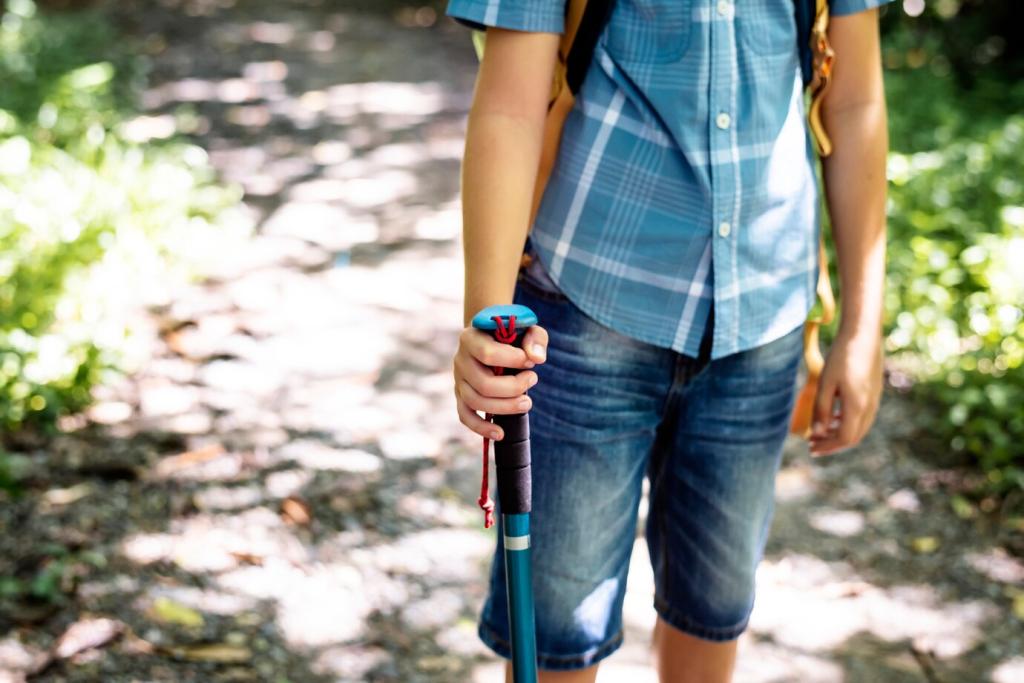
Parks use junction posts, colored blazes, and icons. Confirm you are on the intended trail at every intersection and note distances. Take a quick photo of the trailhead map to reference landmarks if signage becomes sparse or confusing mid-hike.
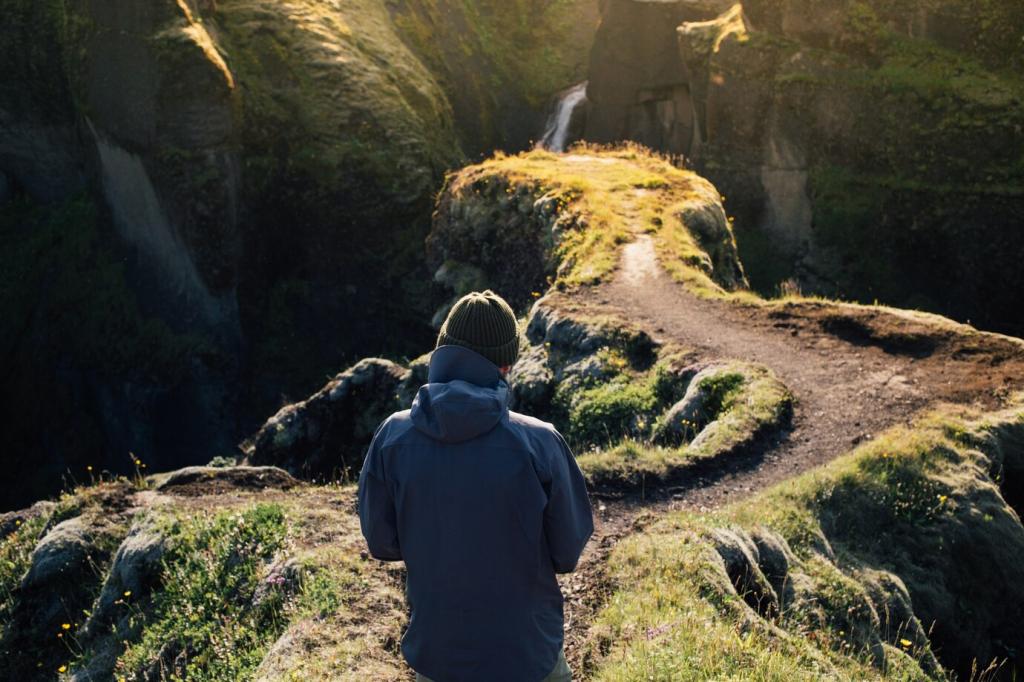
Download offline maps before arrival, as service can vanish at the gate. Drop a location pin at the trailhead, and ask rangers about conditions. They often know about downed trees, washed-out bridges, or wildlife activity affecting beginner routes.
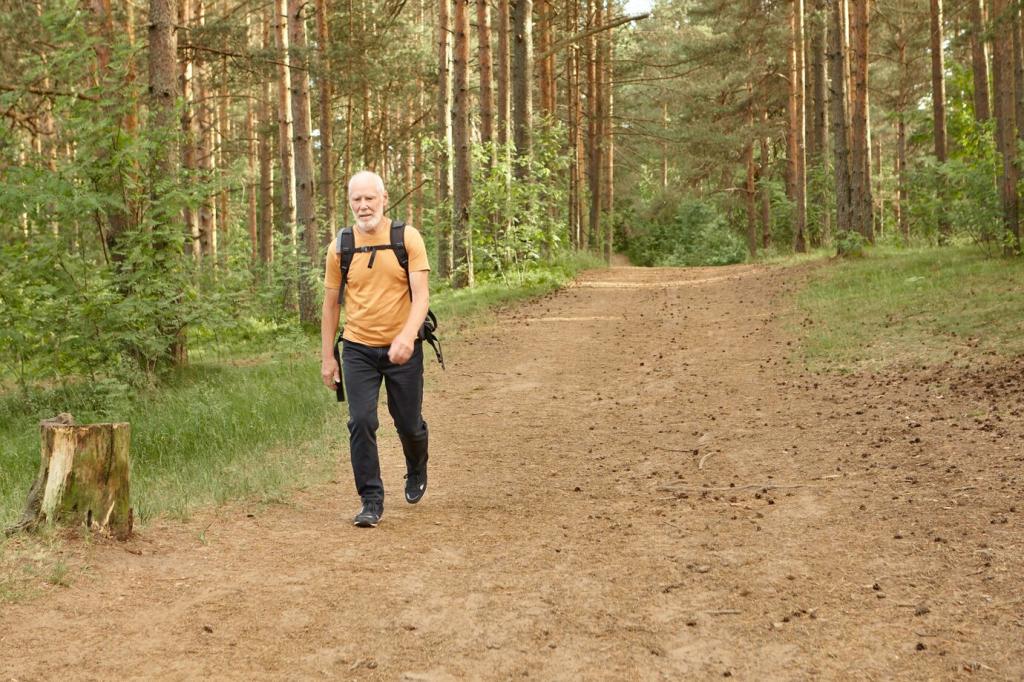
Tell a friend your plan and turnaround time. Consider a whistle, mirror, and lightweight satellite messenger for remote parks. Calm, methodical decisions and staying put when lost improve outcomes significantly, especially near cliffs, rivers, or dense forest.
Stories and Starter Itineraries
We started at dawn, headlamps bobbing, and met the waterfall alone except for a curious robin. Returning early, we passed crowds and felt proud of our calm start. Quiet mornings reward beginners with space, softness, and surprising confidence.
Stories and Starter Itineraries
Choose routes under three miles with modest elevation, clear landmarks, and bailout points. An out-and-back lets you test limits and turn anytime. Loops showcase variety while keeping navigation simple, ideal for learning pace, gear, and snack timing comfortably.
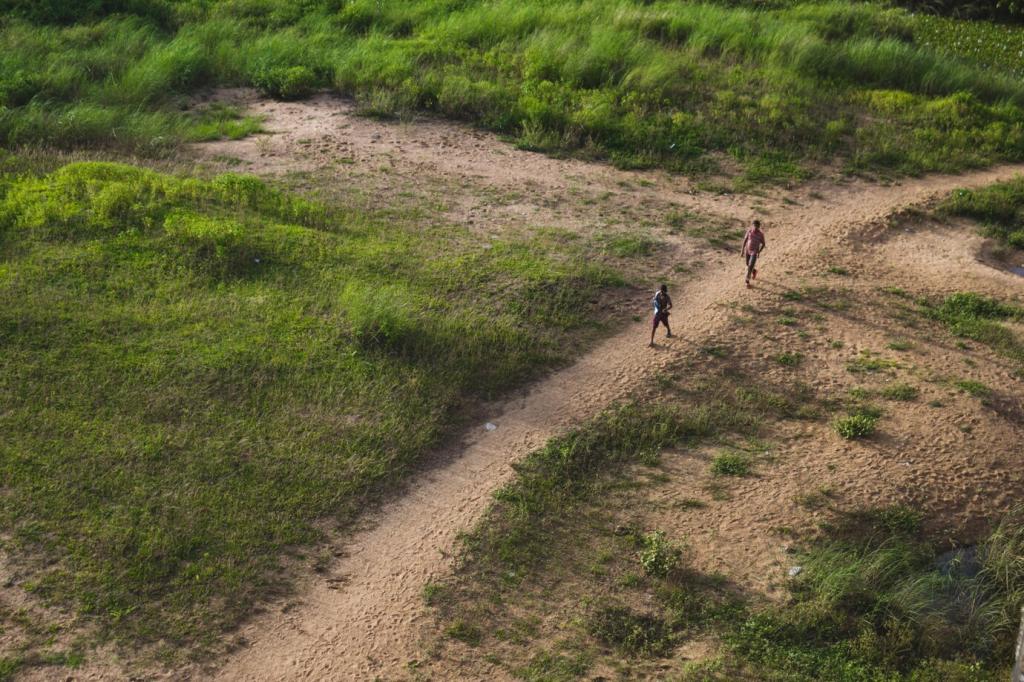
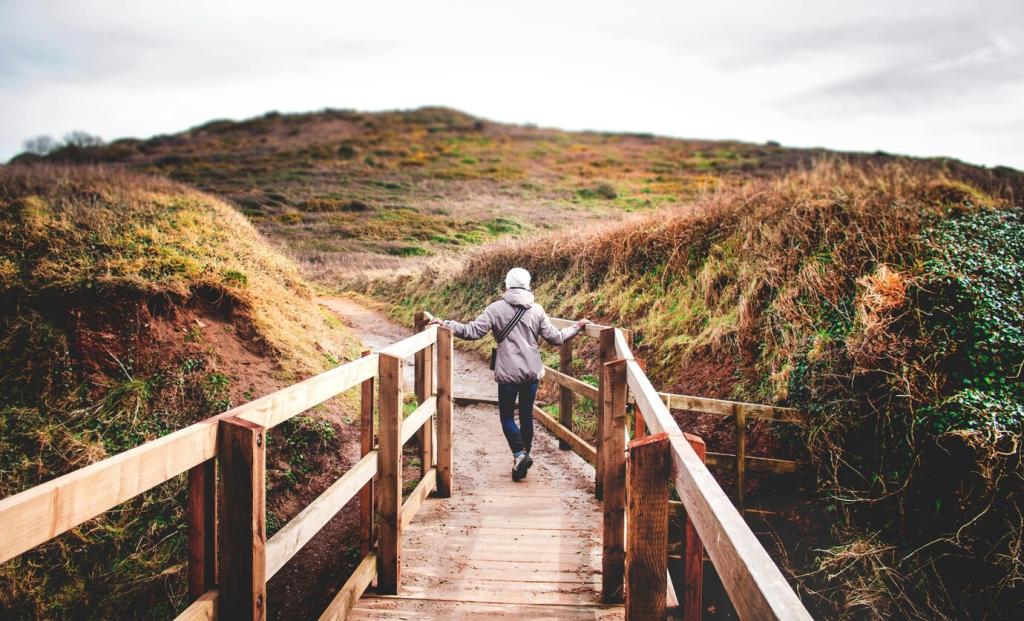
Be a Steward, Even as a Beginner
Volunteer trail days teach skills
Helping maintain switchbacks and drainage builds trail literacy. You’ll understand why staying on path matters and meet mentors. Even a half-day of volunteering makes future hikes safer, more enjoyable, and more connected to the park community’s shared mission.
Citizen science turns curiosity into data
Contribute observations of flowers, birds, or insects using simple apps. Your sightings help monitor seasonal shifts and visitor impacts. It is a meaningful way to deepen your attention while hiking and give back before tackling longer, more ambitious routes.
Share responsibly on social media
Post beautiful moments without revealing sensitive locations or off-trail shortcuts. Highlight stewardship actions, proper distances from wildlife, and permit processes. Your example shapes culture, guiding new hikers toward safe, respectful adventures in beloved national park landscapes.
